| Anthrax picking up wood frass Egg-laying in Bombylidae is rather special. The following account is based on Stubbs & Drake, British Soldierflies and their allies. Females of many bee-flies have a special sand chamber in the tip of their abdomen, that can be filled with dust or sand. The eggs are coated with this, and while hovering the female flicks her eggs to the ground. The coating makes the eggs heavier, which might ease the flicking, and also reduces the risk of desiccation (N. Evenhuis, pers. com.). Females of various bee-flies can be seen taking sand into the chamber. This behavior is easily mistaken for oviposition behavior, as I did in case of this female Bombylius major. I observed a couple of females on sunny patches on a small path through a wood in Zuid-Limburg, the Netherlands (near Slenaken). They were touching the ground with their abdomen for quite some time. Their wings were either at rest, or shivering. |
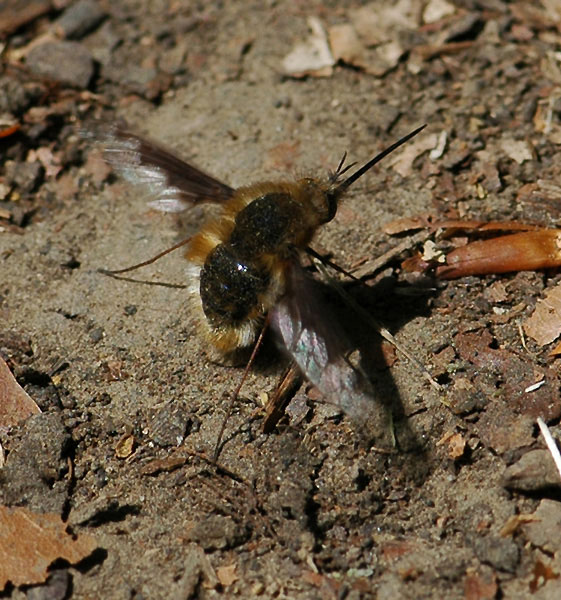 |
| I observed the same behaviour in a female Villa hottentotta this year in Switzerland, on a fully exposed rough road at ca. 1400 m altitude. |
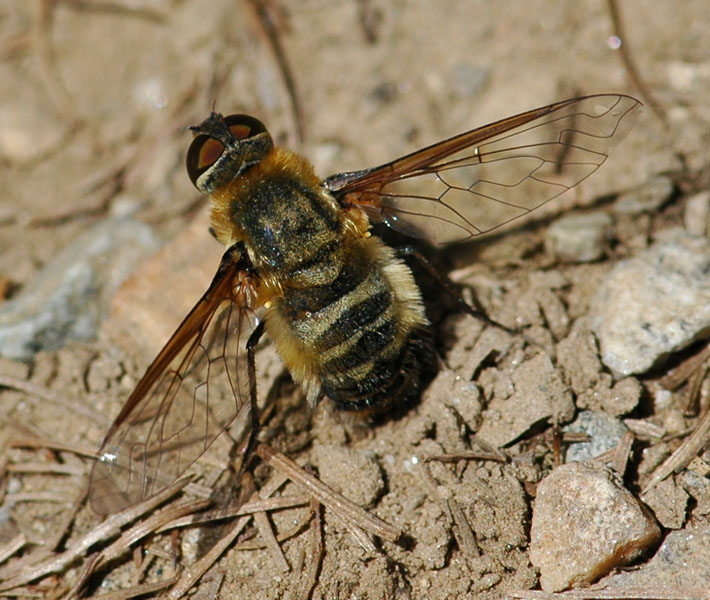 |
| Here I want especially to report a female Anthrax species, that was using wood frass instead of dirt or sand. The species has now been identified as Anthrax trifasciatus. I saw this bee-fly twice at piles of wood meant for burning. It was in the village Mavaglia, in Tessin, Switzerland. Date of observation 19 July 2007. |
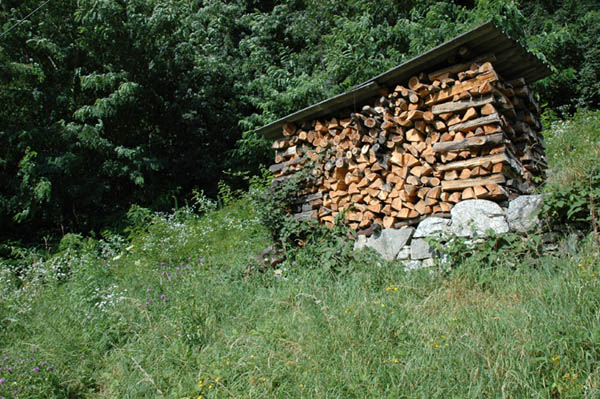 |
| This wood is extensively used by various insects for making nests. Close to it, you could continuously hear insects boring holes. This resulted in lots of wood frass, as can be seen in this photograph: |
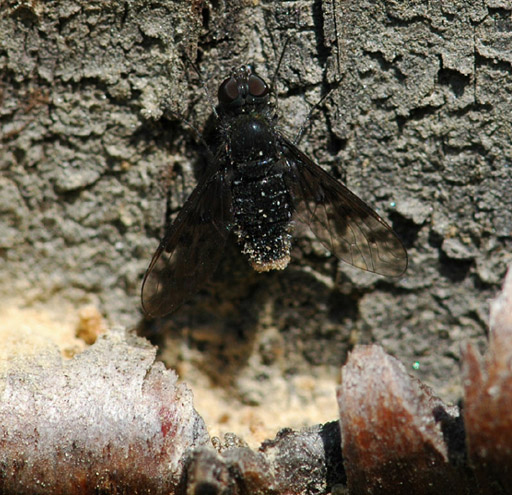 |
| The following photos show the bee-fly dipping her abdomen in saw dust. The behaviour seems very similar to that of Bombylius and Villa - yet with quite different material. Since the frass is very light weight, the idea that it makes eggs heavier so they are more easily flicked seems not very plausible. But dry frass seems not too well suited for preventing desiccation, too! Perhaps the fly does this to prevent the smell of eggs being noticed? |
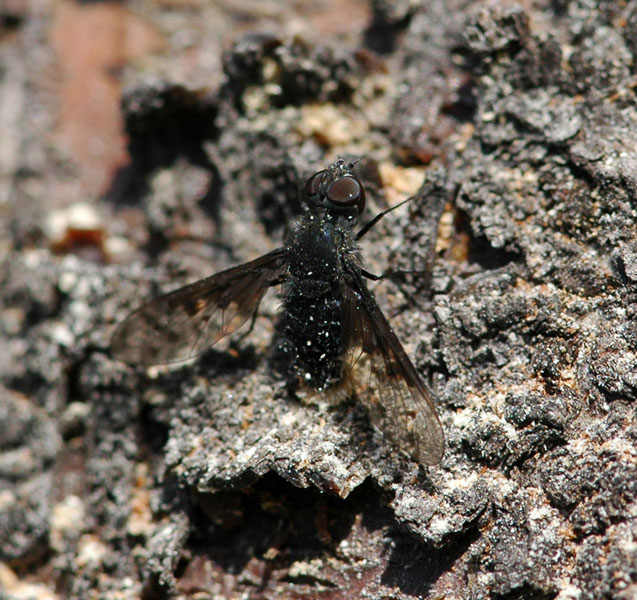 |
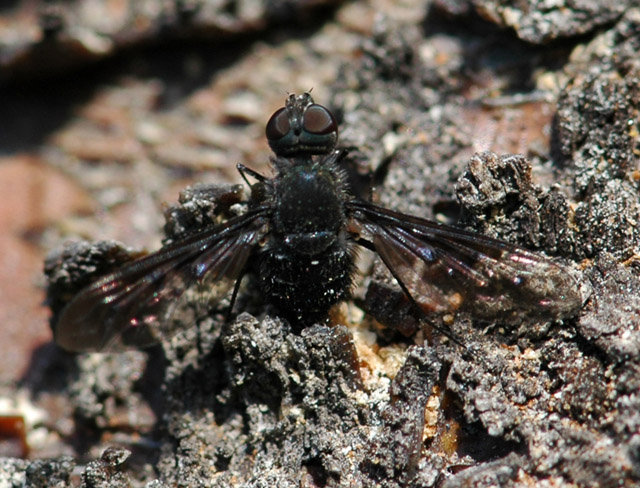 |
| As a result, the tip of the abdomen is coloured whitish, which I first thought to be the fly's natural colouration. |
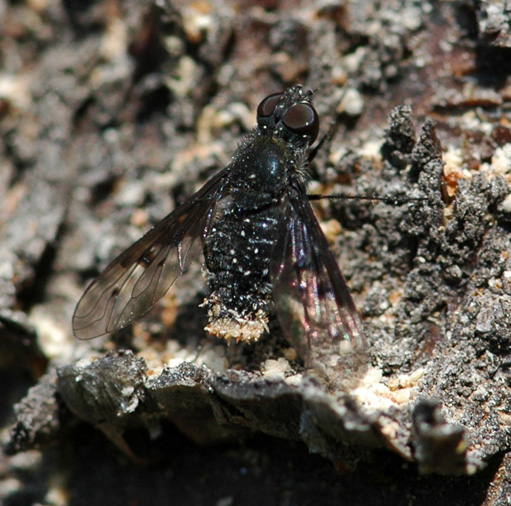 |
 |
||
|
||
 Users Online
Forum Threads
Newest Threads
· which Diptera specie...· Crumomyia notabilis? · Geomyza-->G. tripunc... · Goa, Platistomatid · Dolichopodidae ID Hottest Threads
Theme Switcher
Last Seen Users
Latest Photo Additions
|
Anthrax picking up saw dust
Comments
Post Comment
Please Login to Post a Comment.
Ratings
Rating is available to Members only.
Please login or register to vote. No Ratings have been Posted.
| Date and time
Login
Temporary email?
Due to fact this site has functionality making use of your email address, any registration using a temporary email address will be rejected.
Paul Donate
Latest Articles
· Voltinism in Chaoborus
· Vitaliy Nikolaevich ... · Mating behaviour and... · Oviposition into the... · African Invertebrates Syrph the Net
License Agreement - Click to Download Public files of Syrph the Net can be downloaded HERE Last updated: 25.08.2011 Shoutbox
You must login to post a message. 06.12.25 21:37 He last posted here in April, identifying some Chloropidae.
04.12.25 20:02 Dr Michael von Tschirnhaus, a leading expert on Chloropidae and Agromyzidae, died on 16 September 2025 at the age of 86. He will be greatly missed by the international community. R.I.P.
03.12.25 12:46 Anyone has the scan of "Harkness, R. D.; Ismay, J. W. 1976: A new species of Trachysiphonella (Dipt., Chloropidae) from Greece, associated with an ant Cataglyphis bicolor (F.) (Hym., Formicidae)
01.12.25 22:29 I will try to fix the messages this month. We have to make some other configuration changes before software goes out of support at end of year.
29.11.25 21:57 I would prefer not to receive any more messages from diptera.info signed by Paul... (Thread reply notification)... Could they be signed by ‘The diptera.info team’?
19.11.25 12:31 It is with deepest sadness in my heart that I announce that on Saturday, November 15, one of the great minds of world dipterology, prof. Rudolf Rozkošny, left us forever.
Please remember him with a
15.08.25 10:15 For those specialists not active on Facebook, I just ask to consider to join our group on FB. Please, be aware that it is not necessary at all to be active on FB outside the diptera group. Actually, n
15.08.25 10:13 We received requests to get permission to ask for ID in our Facebook group, https://www.facebo
ok.com/groups/1798 95332035235/ Until now we pointed to diptera.info, but since Paul's passing we not 23.06.25 18:10 If you have some spare money, there is a copy (together with keys to pupae and larvae) for sale by Hermann L. Strack, Loguivy Plougras, France
23.06.25 11:18 Appreciate it, Tony Irwin! I got the hint to use the key next to Langton and Pinder key for females of Chironomidae. So no specific queries, except the keys...
I will keep this on my list and hope th
|
|
images in Diptera Gallery and Forum of their respective owners Powered by PHP-Fusion copyright © 2002 - 2025 by Nick Jones. Released as free software without warranties under GNU Affero GPL v3. SimpleAsThat |
||
| Render time: 1.01 seconds | 251,184,935 unique visits | ||













Really it is very common to see this behaviour, at least, here when I spotted them. I will try to verify if the kind of materials are the same. And if I find anything curious I will let know here.